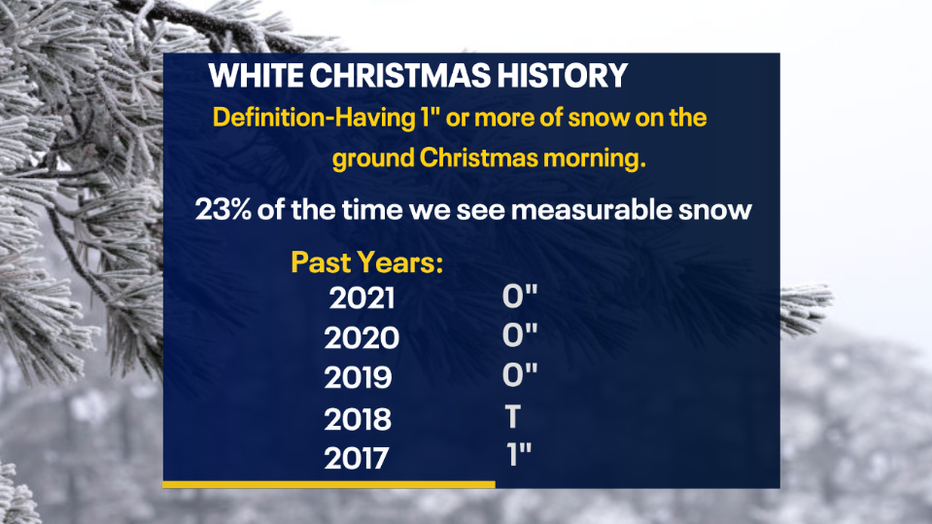White Christmas forecast, southeastern Wisconsin could see snow
Christmas is just around the corner, and what does everyone want? SNOW!
With Wisconsin being in the northern portion of the U.S., people assume that snow is very likely for the holiday season. However, looking at the winter climatology for this area, we can see that this is not always true.
SIGN UP TODAY: Get daily headlines, breaking news emails from FOX6 News
What is the definition of a white Christmas?
A "white Christmas" is defined as 1 inch or more of snow on the ground Christmas morning, Dec. 25. This could mean new snow that fell on Christmas Eve, Dec. 24 or snow that fell in the days prior.
Milwaukee experiences measurable snow – 1 inch or more – on the ground Christmas morning 23% of the time. In fact, the last time we had a white Christmas was in 2017.

Historic Christmas morning snow depths were most recently recorded in the late 20th century to the 21st century. This includes the top snow depth amount in the record books of 25 inches in 2000. 2013 also made the Top 5 list with a snow depth of 10 inches. While these astronomical amounts are rare, Milwaukee does has a 51% chance of seeing any snowfall amounts, even a trace, on Dec. 25.

Viewing the chances of a white Christmas on a national level, warmer temperatures in the south gives a 0-10% chance of seeing 1 inch or more of snowfall Christmas morning. Higher chances of seeing a white Christmas increase further north across the U.S. This is due to the southern migration of the Polar Jet Stream during the fall and winter months, allowing colder air to push into northern locations. The contrast between the cold air from the north and warm air in the south can cause powerful winter low-pressure systems to bring cold air and at times greater potential snowfall in northern and higher elevated areas.

Specifically for southeastern Wisconsin, there is a 30% to 60% chance of having a white Christmas. That is a large range with lower probabilities near the Wisconsin-Illinois border and higher probabilities near Fond du Lac and Sheboygan. This climatological data is based on a 30-year time period.

Meteorologists usually look at long-range models and ensembles that show variations of forecasts when analyzing further out in time. This year, there is the chance of a winter system looking to move in either right before or right after the holiday period. So for those who want to have a "white Christmas" – there is a chance it could happen.

